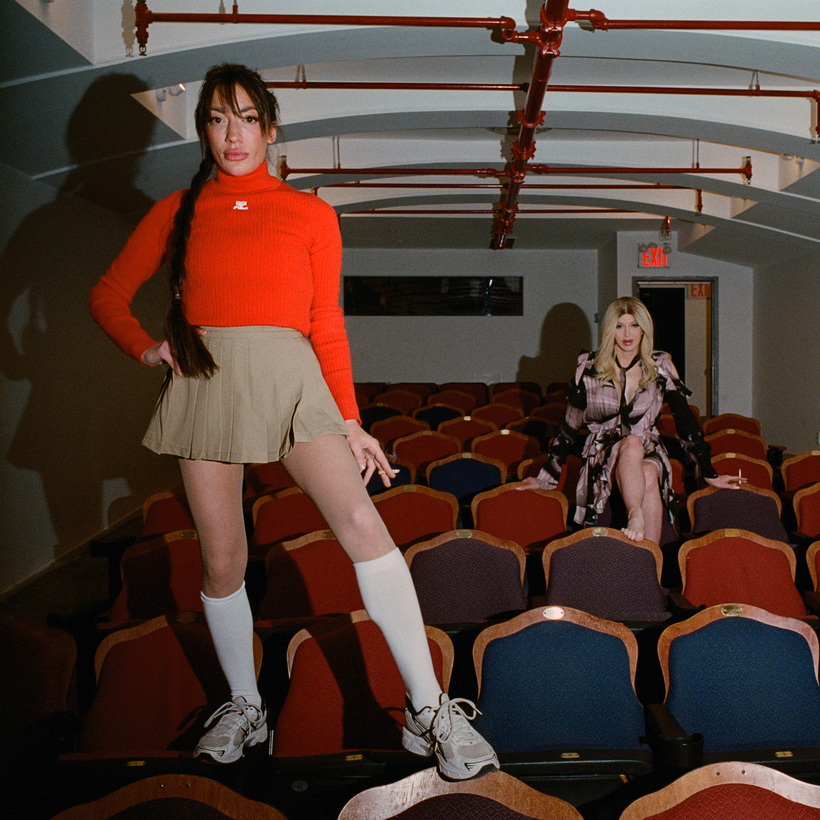When the gallery O’Flaherty’s opened in New York’s East Village, at the end of 2021, it was quickly apparent that it was not interested in sharing the politesse of the polished-concrete sales floors of Chelsea. First of all, it was, for no discernible reason, named like an Irish pub. It announced itself in queasy-putrid neon in the window of its knockdown storefront, on Avenue C; a matching sign asked, What’s wrong?, a mock taunt hinting at their violations of good taste, or an earnest attempt to diagnose the ailments of the art world.
O’Flaherty’s was founded by the painters Jamian Juliano-Villani and Billy Grant and the musician Ruby Zarsky. None had experience running a gallery. (Juliano-Villani: “If you don’t know what you’re doing, you can’t fuck it up.”) Before they opened, Juliano-Villani expected they’d fold within a year.
She was half right. Within eight months, O’Flaherty’s had mounted surveys of the Los Angeles artist Kim Dingle and the art-world dropout Ashley Bickerton—artists who are beloved by their peers but have skirted under mass appeal—and transformed itself into a Day-Glo bodega nightmare as a backdrop for Bjarne Melgaard’s remakes of Allen Jones’s button-pushing women-as-furniture sculptures, each turnover occasioning both a total interior transformation and a raucous opening reception that often poured into the street. This was apparently enough for their landlord. Something more respectable has since moved in: a tattoo shop.

This month, following stalled negotiations for Andy Kaufman’s old apartment (“They gave it to a fucking barbershop,” Juliano-Villani says), O’Flaherty’s comes in from the New York real-estate wilderness. They have migrated two letter avenues west, to the East Village space vacated by the Upright Citizens Brigade Theatre, the pipeline of middling sketch comedians from whose embarrassing two-decade popularity society has yet to fully heal. “We found this on Craigslist,” Juliano-Villani deadpans.
“If you don’t know what you’re doing, you can’t fuck it up.”
The space languished for four years, an eternity, perhaps due to the ghosts of misguided improv dates that surely haunt it, but also because of its labyrinthine floor plan. Juliano-Villani administers a tour while smoking a cigarette.
The gallery is still a construction site the week before its scheduled opening, on February 16. Sections of track lighting haven’t been wired correctly and flicker with horror-film effect. An open case of Veuve Clicquot is piled next to a sewage pump. But the important stuff is ready, like the programming and the Hermès ashtrays. “We need something nice in here, because everything else is garbage,” Juliano-Villani explained, as she and Zarsky lit up.
Outside, they’ve installed a crisp green-and-white-striped sidewalk canopy that suggests a flavor of the Chelsea Hotel spliced with a funeral home. It reads, in a masterstroke of self-effacing banality, East Village Art Gallery. “Classy but cheap, that’s kind of our vibe,” Juliano-Villani says. “Some elements of it being fucked up are cool. Like, a million-dollar sculpture, in here?”

O’Flaherty’s flits between seriousness and put-on, a commercial art gallery and an elaborate performance of one. (Juliano-Villani is not, strictly speaking, a conceptual artist; her droll, reference-dense figurative paintings are in the collection of the Whitney Museum and have the auction results to match. But the gallery makes a point of staying away from painting. Who needs the competition?) Juliano-Villani swears they’re interested in being a viable business, but also says things like, “We’re not trying to make money,” an idea that would surely cause any other art dealer eye spasms.
“We found this on Craigslist.”
“Our focus is doing the best shows possible at an extreme level,” she went on. “We’re in a unique position with artists because we’re not trying to represent them. That’s when things start to suck. We just want to do shows artists aren’t able to do anywhere else. Basically a faster, shittier Met.”
In an art world that can seem to be dictated by salability and schmoozing rather than ideas, this pose has proved both pleasingly disorienting and attractive. O’Flaherty’s receives near-constant solicitations, including from more established galleries, nearly all of which are declined. They’re not interested in “emerging artists,” and have a healthy disregard for the work of their peers. “We don’t like knowing the people we do shows with,” Juliano-Villani says. “We have a rule: No friends.”
“No friends!,” Zarsky seconded. “It’s better if they’re dead, honestly,” Juliano-Villani says. Zarsky agreed again: “Yeah, that’s the best, is when they’re dead.”

O’Flaherty’s first exhibition on Avenue A will be a kind of exorcism courtesy of Gelitin, the (still-alive) Austrian collective that performs a strain of gross-out relational aesthetics. “I called them and said do whatever the fuck you want to do,” Juliano-Villani says. “They do crazy shit, but their galleries won’t let them do it. So we’ll let them do it.”
“The way that we function is, you have to come,” Juliano-Villani says. “Most of our shows you can’t really get from looking at pictures online. Because it is a whole thing. That’s how we look at art. Art and life blur together; you can’t really tell the difference. That’s kind of what we’re going for.”
“O’Flaherty’s Gelatin O’Flattering,” the first exhibition at the gallery’s new location, at 44 Avenue A, in New York, opens February 16
Max Lakin is a New York–based writer
